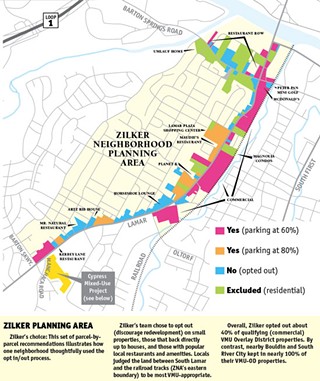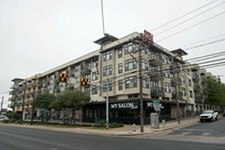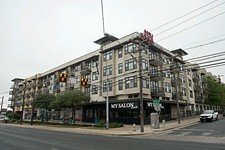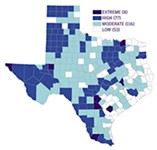To Opt, or Not?
Zilker tweaks VMU
By Katherine Gregor, Fri., Feb. 1, 2008
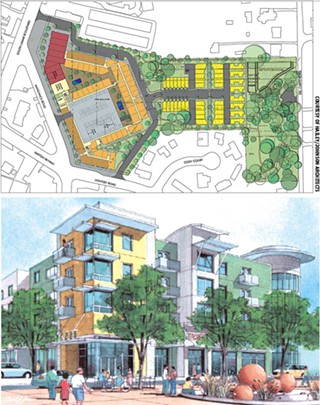
The Zilker Neighborhood Association's recommendations on vertical mixed-use provide a window into how one neighborhood-planning team carefully weighed VMU's power to change its neighborhood, for better or worse. "We appreciate the ordinance being structured to allow each neighborhood to tailor the use of VMU as appropriate for our community," observed ZNA President Jeff Jack, a longtime neighborhood activist who is often critical of City Hall. In return, "We hope that council recognizes the willingness of our association to be balanced in our recommendations." In other words, please don't overrule our opt-outs from the dais.
Zilker is of particular interest as an early VMU hotbed. According to George Zapalac of Watershed Protection and Development Review, of the nine VMU projects already filed with the city (most under "early consideration"), four are located on South Lamar – the primary core transit corridor in the Zilker Neighborhood Planning Area. Those projects include Post South Lamar (site of the Stoneridge Apartments) by developer Ardent Residential. Ardent also is co-developing a large (300-apartment) mixed-use (possibly VMU) project around the iconic-and-to-be-untouched Broken Spoke, farther south on Lamar. Other VMU projects planned are Magnolia and Lamar Square Condominiums. Across Lamar at Manchaca (within the South Lamar Neighborhood Planning Area), Cypress Real Estate Advisors have planned a 360-apartment VMU project.
Two Sides, Two Stories
The Zilker Planning Area includes both sides of Lamar from the river south to Oltorf, then continues on, only the west side of Lamar, south to Barton Skyway. It's an ugly strip – visually chaotic, pocked with automotive joints, architecturally void. Meanwhile, the Zilker neighborhood is rapidly gentrifying; small, older homes are scrapped weekly and replaced by huge new ones in the $700,000 range. Many of the new residents (and existing ones) would welcome some handsome, new commercial architecture on Lamar. The smattering of cool restaurants, clubs, and shops (which earned one stretch "IBIZ" banners designating an Independent Business Investment Zone) mostly occupies forgettable structures that relate poorly to the street. Redevelopment could only improve the urban aesthetics here. The other core transit corridor within Zilker Neighborhood Association's area is Barton Springs Road, from Lamar west to Robert E. Lee. That stretch hosts a popular "restaurant row," tree-covered trailer parks, and new condo developments.
On both streets, the neighborhood association first removed all residential properties within the VMU Overlay (green on map), as VMU applies only to commercial properties. Of the commercial tracts, according to Jack, they selected about 60% as "VMU-appropriate" with full developer incentives (pink on map). On South Lamar, the vast majority of parcels kept in the overlay is sandwiched between the road and the railroad tracks that run parallel to it, on the east. That siting buffers the tracts from single-family homes. The parcels are large enough to benefit from VMU and contain no beloved local businesses.
On the other side of Lamar, it's a different story. ZNA recommends opt-outs (blue on map) for many tracts, particularly those with popular neighborhood restaurants and shops to which residents could walk or bike. Those include Planet K, La Feria, the Horseshoe Lounge, the Birds Barbershop building, Artz Rib House, and Mr. Natural. One concern is that rising land values reflecting increased VMU entitlements could drive up commercial rents for these businesses. Other tracts were left in the VMU Overlay, but the Zilker Neighborhood Association is asking for a parking requirement of 80% of the city norm. (VMU ordinarily provides a 60% reduction.) The largest such tract is the Lamar Plaza Shopping Center, home of the Alamo Drafthouse South Lamar. ZNA wanted more parking required on the west side of Lamar to prevent it from spilling over to surrounding residential streets (as currently occurs every weekend from Alamo patrons).
In addition to the parking concerns, said Jack, the planning team was concerned that "many sites were much too small to benefit from VMU." To accommodate large-scale VMU projects, developers would want to acquire multiple adjoining tracts – which could drive out local small businesses already in place. (In any case, city compatibility standards – which limit project size and scale near single-family homes – would largely nullify the VMU unit-increase incentive.) Jack also cited a concern about commercial creep back onto residential lots. Here the neighborhood took a protectionist stance.
Similarly on Barton Springs Road, ZNA wants to remove virtually all parcels from the overlay. Residents like the mix of residential and restaurants there now, said Jack, and don't want to lose their walking-distance eateries – Chuy's, Shady Grove, Flipnotics, Romeo's, Green Mesquite. (Locally owned character clearly counts toward neighborhood value; flung on the VMU chopping block were McDonald's, Jack in the Box, and Taco Cabana.) The family-friendly Peter Pan Mini Golf also was opted out.
Jack said that, unlike some other neighborhoods, ZNA chose not to "opt-in" any tracts not already in the VMU Overlay. (Some have opted-in parcels on all four sides of a major intersection, for example, to create more of a VMU "node.") That level of VMU-love was reserved as a future bargaining chip. If council fully supports the neighborhood's VMU recommendations now, said Jack, and the first projects prove an asset to the neighborhood, ZNA might look more kindly on such opt-ins in the future.
Affordability Issues
An overarching change recommended to council by the Zilker team relates to the affordable housing that VMU developers are required to provide (10% of total units). Zilker wants its affordability level lowered from 80% of median family income (standard for VMU) to 60% MFI. Jack said 80% MFI already corresponds to the market rate for apartments nearby, so ZNA desires deeper affordability. At Post South Lamar, the city is "buying down" the apartments 30% further, to 50% MFI, with affordable-housing funds.
Developers warn that altering VMU so that they alone must fund affordability at less than 80% MFI can make projects unfeasible – so the 60% MFI level recommended by Zilker could be unwise. If the numbers don't work, developers will simply decline to file under VMU and instead build their mixed-use project under other commercial zoning, without any affordable units. "At 80 percent MFI, developers can absorb the costs of capping rents," says Ardent Residential's Brett Denton. "You get below that, and the investors in these projects aren't getting the return they're looking for. If there's a lower return due to affordable housing, projects aren't going to find investors, and they aren't going to get built."
With regard to city-funded buy-downs for deeper affordability, Denton also noted an inflationary flaw. On the Ardent-Post South Lamar project, the developer agreed to a $1.1 million city contribution to offset the locked-in lower rents on the 50% MFI affordable units. But a year later, actual construction bids have come in much higher than projected. Based on real costs, Ardent would have negotiated a city contribution of at least $1.7 million, said Denton.
While that shortfall might sound like a break for citizens, VMU will not be effective if developers don't voluntarily elect to use it. "If there's not some form of 'true-up' mechanism, to base the final agreement on actual costs after the project gets bid by the general contractor, it's a difficult model to make work going forward," said Denton. If that mechanism isn't added, he warned, "developers will greatly inflate their numbers, to protect their downside."
At the already approved Cypress project, the affordable-rate apartments will rent at the standard 80% MFI level. Rather than deepening affordability, the developer provided other community benefits – including financial assistance to Habibi's Hutch, a locally owned day care displaced by the project. The developer also donated land for a new city pocket park. Parkland bond funds bought another parcel, to result in a new 2.5-acre neighborhood park – a direct result of the VMU project.
Note: Katherine Gregor resides in the Zilker neighborhood but had no involvement in its VMU process.
Got something to say on the subject? Send a letter to the editor.





